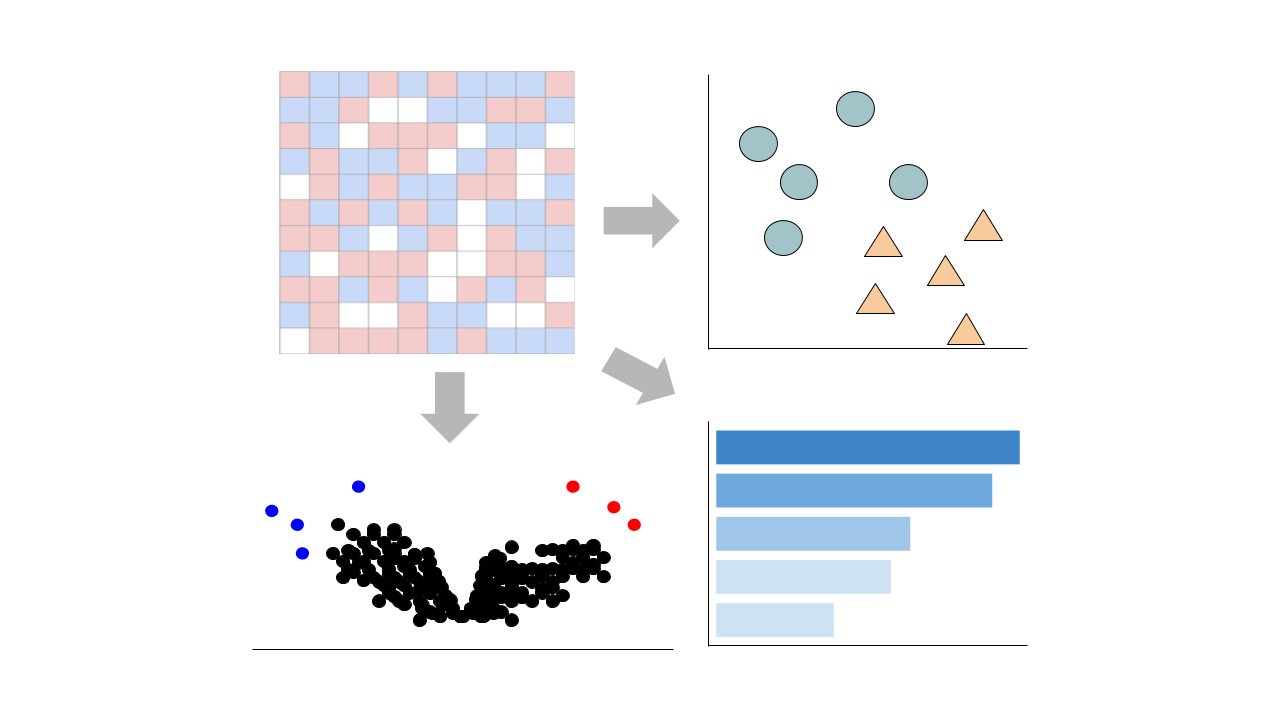 Gene counts are sourced from ARCHS4, which provides uniform alignment of GEO samples.
You can learn more about ARCHS4 and its pipeline here.
Gene counts are sourced from ARCHS4, which provides uniform alignment of GEO samples.
You can learn more about ARCHS4 and its pipeline here.
Select conditions below to toggle them from the plot:
| GROUP | CONDITION | SAMPLES |
|---|---|---|
| BAT |
GSM3119128
|
|
|
GSM3119104 GSM3119108
|
||
| WAT |
GSM3119117 GSM3119119
|
|
|
GSM3119105
|
Submission Date: Apr 27, 2018
Summary: We analyzed coding transcript abundance in paired biopsies of white and brown adipose tissue obtained from the supraclavicular region of 15 healthy subjects.
In a prior experiment measuring 18F-deoxyglucose uptake by PET-CT, 9 subjects displayed active brown fat and 6 did not.
GEO Accession ID: GSE113764
PMID: 29909972
Submission Date: Apr 27, 2018
Summary: We analyzed coding transcript abundance in paired biopsies of white and brown adipose tissue obtained from the supraclavicular region of 15 healthy subjects.
In a prior experiment measuring 18F-deoxyglucose uptake by PET-CT, 9 subjects displayed active brown fat and 6 did not.
GEO Accession ID: GSE113764
PMID: 29909972
Visualize Samples
 Visualizations are precomputed using the Python package scanpy on the top 5000 most variable genes.
Visualizations are precomputed using the Python package scanpy on the top 5000 most variable genes.
Precomputed Differential Gene Expression
 Differential expression signatures are automatically computed using the limma R package.
More options for differential expression are available to compute below.
Differential expression signatures are automatically computed using the limma R package.
More options for differential expression are available to compute below.
Signatures:
No precomputed signatures are currently available for this study. You can compute differential gene expression on the fly below:
Select conditions:
Control Condition
Perturbation Condition
Only conditions with at least 1 replicate are available to select
 Differential expression signatures can be computed using DESeq2 or characteristic direction.
Differential expression signatures can be computed using DESeq2 or characteristic direction.
This pipeline enables you to analyze and visualize your bulk RNA sequencing datasets with an array of downstream analysis and visualization tools. The pipeline includes: PCA analysis, Clustergrammer interactive heatmap, library size analysis, differential gene expression analysis, enrichment analysis, and L1000 small molecule search.

 Chatbot
Chatbot Single Gene Queries
Single Gene Queries
 Gene Set Queries
Gene Set Queries
 Bulk Studies
Bulk Studies
 Single Cell Studies
Single Cell Studies
 Hypotheses
Hypotheses
 Resources
Resources
 Contribute
Contribute
 Downloads
Downloads About
About
 Help
Help